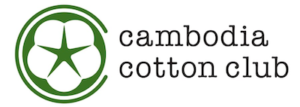Countries that had been colonies of Western powers also began independence movements one after another, including Haiti, which became the first non-white nation to break away from the domination of European countries. Haiti had rich soil and an abundance of agricultural products such as cotton.
(Cotton seeds are believed to have originated in the Indian subcontinent and Central America. Cultivation requires large amounts of water and sunlight: one kilogram of cotton fiber (one T-shirt and one pair of jeans) requires 20,000 liters of water. (These requirements are met only in the humid and semi-arid regions of the tropics and subtropics.)
After gaining independence from the Western powers, the cotton-producing countries that were supposed to have the "white gold" to themselves faced another problem.
Poor countries, whose low labor costs had been the driving force behind their exports, now had to compete on price with industrialized countries that boasted overwhelming superiority in industrial and chemical technology.
That country is the United States. Because of the need for large amounts of labor, cotton, which had been cultivated by slaves imported from West Africa, was now being grown without human labor.
The most labor-intensive part of cotton cultivation is harvesting. That harvesting is now done by machines instead of people, and it is believed that the first harvesting season was used in Texas in 1943. (Some say Arkansas.)
First, at this stage, Indian and African workers had to compete with tireless machines. As mentioned briefly in [The Relationship between Cotton and People ⑥], the system of cultivating only a single crop was perfected during the colonial period, and it is not easy to produce other export products.
In addition, the efficient production of American cotton is evolving. When the harvester harvests the cotton, the fiber is mixed with debris from the leaves of the cotton plant. Leaf litter can interfere with spinning and dyeing. To prevent this contamination, defoliant is now sprayed on the cotton before harvest. In addition, herbicides, hormones, and other chemicals as well as mechanization came to be used in large-scale irrigation (water supplied from underground water or lakes).
The South, including Alabama, Mississippi, Louisiana, and Georgia. In 17 states today, including Arizona, California, New Mexico, Oklahoma, Texas, and other western states, you can see the sight of cotton fields stretching endlessly beyond the horizon. It no longer looks like agriculture, it no longer looks like industry, and it is almost as if it has always been that way to begin with.
This alone is a threat to small farmers in Africa and India. To compete with the U.S., they begin to go into debt and use pesticides. And the use of pesticides continues to increase as insects and grasses become resistant to them.
Cotton farmers in even poorer countries face a desperate situation. The U.S. government begins to provide subsidies to protect its own cotton farmers. No matter how high the cost of labor in the U.S. economic superpower, no matter how much it costs for machinery and chemicals, U.S. cotton can still compete on price with cotton farmers living below the absolute poverty line in poorer countries.
This U.S. subsidy policy would stabilize the international market price of cotton as a raw material at a low price. The value of the "white gold," which once brought enormous wealth, declined, leading to a chain of events that would keep farmers in poor countries working from dawn to dusk, but not out of poverty as long as they continued to produce cotton.
